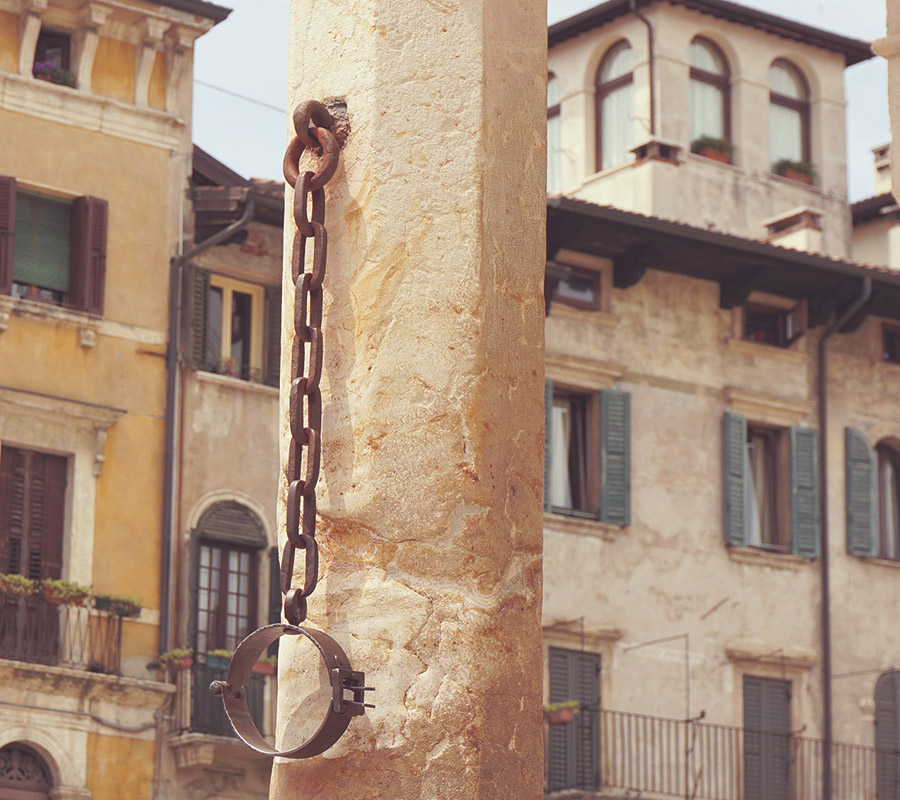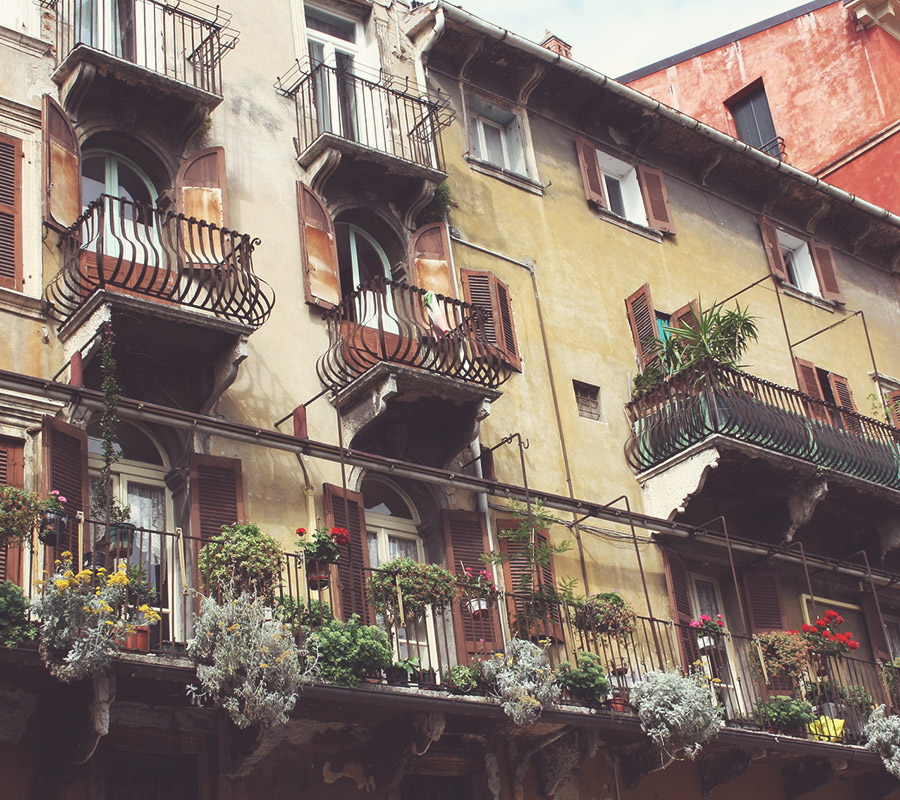
The ancient Roman forum.
The square, with its elegant and fashionable shops, cafés and restaurants, is a favorite evening spot for both locals and tourists.
Ever since Roman times, Piazza delle Erbe has been Verona’s favorite meeting point lt is impossible to not be enchanted by the beauty of Piazza delle Erbe, which is situated in the heart ot the old city, which was once the ancient Roman forum. For centuries this was the political and commercial center of the city, but it also has always been a picturesque market for fruit, vegetables and flowers, in the so-called “tolomeo”, or central area, where still today there are merchants’ stands, protected by typical white umbrellas, which in the evening are ali removed trom the square, leaving it free, and making it one of the most beautiful spots of the city. Piazza delle Erbe is surrounded by beautiful buildings, housing shops and some of the most popular cafés among the in crowd of Verona, where great crowds of young people gather from happy hour onwards, crowding the square 12 months a year. In the center of the square, there is the Colonna del Mercato (1401), on top of which there is a Gothic kiosk commissioned by Gian Galeazzo Visconti to display the symbol of his ruling lordship. On the stairs and pillars of the kiosk one finds inscriptions which are medieval trading measurements, and which were specified by the township ot Verona. Among the other monuments, there is a 16th Century sedan, a square canopy in marble, where the ruler would sit during his power-possession ceremony.


There is also the Fontana di Madonna Verona, as well as the Colonna di San Marco (1523), showing the glorious winged lion, St. Mark the Evangelist, symbolizing the Venetian Republic. Coming from via Mazzini, at the southeast corner of the square, one can see severa/ buifdings whose form stili shows that they were tower-houses during the 12th century, i.e. the communaf period, and they constituted the Jewish district of the town. An outstanding edifice is indeed the Domus Mercatorum, built in 1301 by Alberto l della Scala. The building, which was the Chamber of Commerce, has a columned portico, wide million windows and battlements. Further up the square, there are several Renaissance buildings and the Torre del Gardella, built by Cansignorio in 1370, and displaying the oldest tower-clock in Verona.
Next to the tower, and covering the entire upper side ot the square, is the impressive, fate Baroque Palazzo Maffei, built in 1668, and decorated with a balustrade terrace boasting statutes of Hercules, Jupiter, Venus, Mercury, Apollo and Minerva. On the right side of the square, one finds the 16th century Case dei Mazzanti, whose façades were beautifully frescoed by Alberto Cavalli during the first half ot the 16th century. The fast part of the square is the back of the Domus Nova, and then the neoclassical side of the Palazzo del Comune (or Palazzo della Ragione), which today is a prestigious Museum. Between the two buildings there is an arch, l’Arco della Costa, whereby costa means rib, because since the 18th century there has been a whafe rib hanging tram the arch. Upon walking through the archway, one enters into the Piazza dei Signori, with, on the right, the Torre dei Lamberti, which is actually between two squares. Those who brave climbing the tower are rewarded with a breathtaking view over the city.








